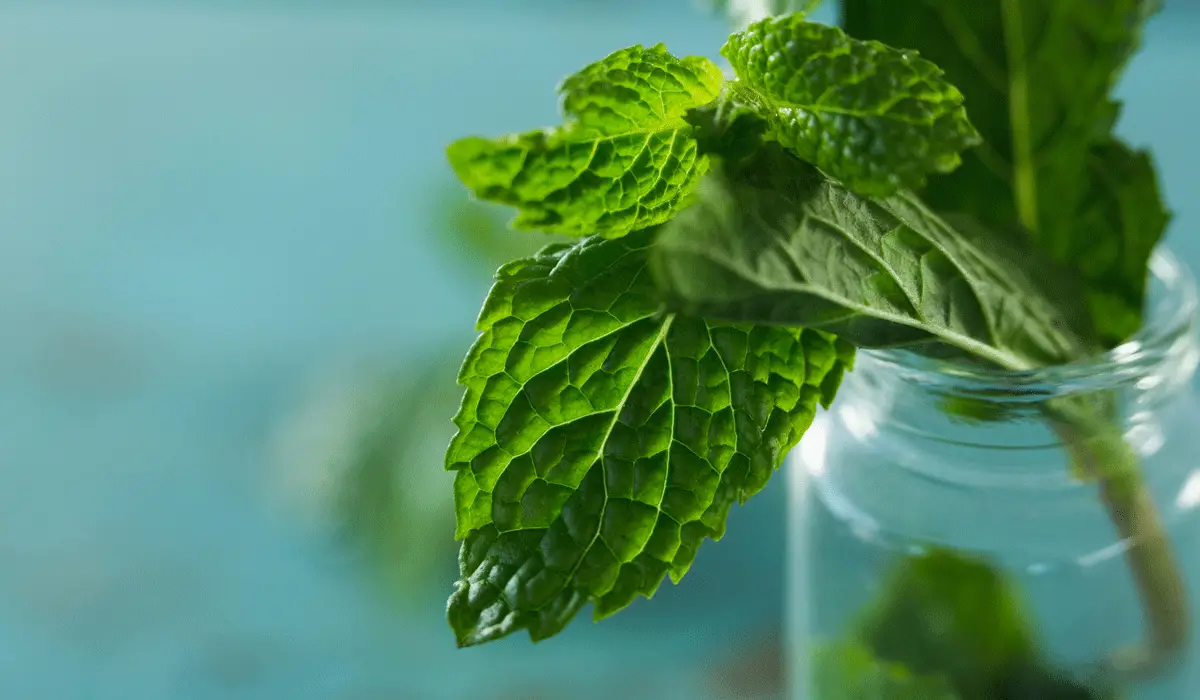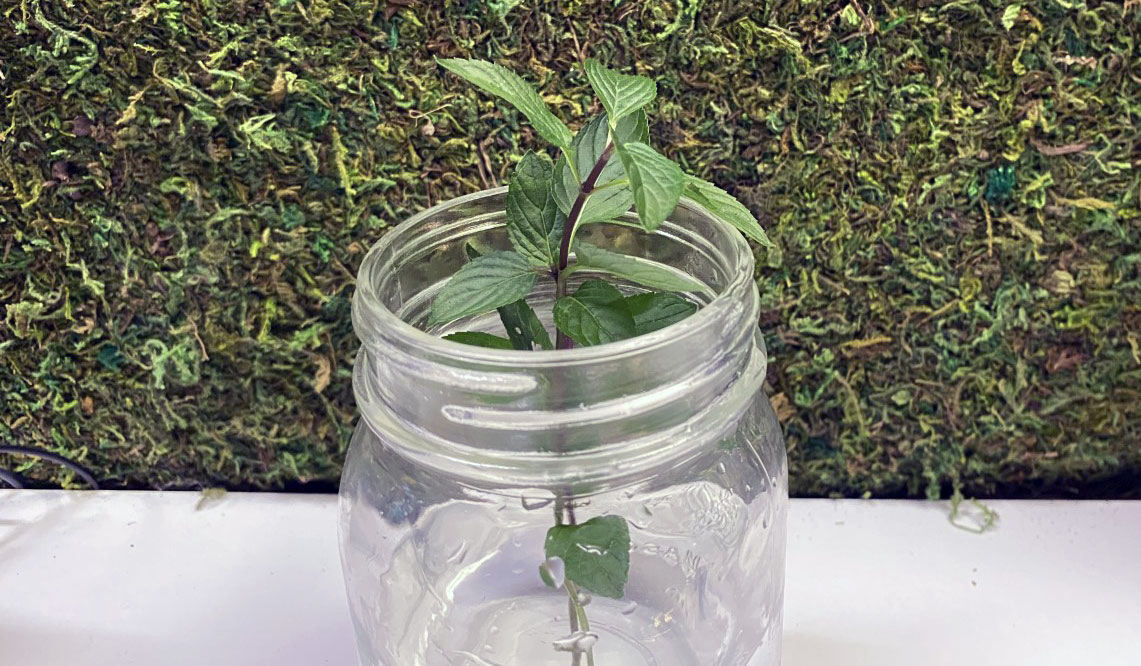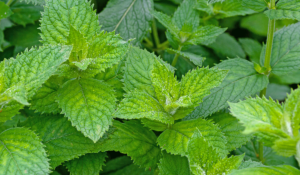Hydroponic Mint (Key Things Beginners Need to Know)

This post follows our research editorial guidelines.

Mint has so many versatile qualities, so it’s no surprise you want to start growing it yourself! Whether you want to use it for handmade soap, in smoothies, or as a topping to your favorite dessert, there are so many ways to incorporate mint into your daily lifestyle.
But, if you’re like me, you may be curious as to where to start. Here’s what I’ve learned on my journey: Mint can be grown in any type of hydroponic system as long as the right conditions including nutrients, spacing, and water pH. All these elements combined will offer the best hydroponic mint possible.

Table of Contents
Stay with me as I share several options for growing mint down below. So, whether you want to start from scratch with seeds or use your first cutting, you’ll have all your questions answered.
Below, I go over the key things you need to know about growing mint hydroponically, including the very best AeroGarden you can use to do so – and why. Your mint-growing journey starts now.
Does Mint Grow Well in Hydroponics?
Yes, mint grows well in hydroponics. A hydroponic system is best for lightweight plants that have leafy growth, making mint a perfect option. The good news is that mint is so versatile that it’ll work in pretty much any type of hydroponic system you have.
Starting Mint Seeds Hydroponically
If you’re looking to grow your mint from seeds, there are a few steps you should take in order to properly grow them.
1. Plant Them In Growing Medium
For this first step, you want to take your seeds and plant them in your favorite growing medium like Coco coir or readymade rapid root plugs. This allows the seeds to grow and germinate the same way they would in soil.
They also make it easier for plants to be transferred to the hydroponic system once the germination process is complete.
2. Allow the Seeds to Germinate
Germination is probably the most extensive part of the process. Bringing a seed to sprout can take anywhere between 10 to 16 days. Be sure to keep your plants in temperatures between 70 and 75 degrees and give them plenty of sunshine or indoor light.
3. Transplant Them Into Your Hydroponic System
Once your seeds have properly germinated, you should be able to transfer them into your hydroponic system without any issues.
Using the readymade rapid root plugs mentioned in the germination step allows them to make it easy to drop your plants into your hydroponic system with little to no issue.
4. Once Your Plants Are Full Grown, You Can Resort to Cuttings
While growing from seeds is a good way to grow your own mint, once you have fully grown plants, you don’t have to repeat this process.
You can simply grow your plants from cuttings, which is an easier process overall and it can save you time.
Start with a Mint Hydroponically From a Cutting

While growing mint plants from seeds is a great way to grow mint, the easier and more ideal way of growing your mint plants hydroponically is by utilizing cuttings.
Here’s what you need to know about growing a mint plant from a cutting – also known as mint propagation.
1. Cut Off A Stem
First, you want to take an existing mint plant and cut the stem off right below the leaf node. Don’t worry about there not being leaves or roots on it yet. That part will come later.
For now, this is just prepping the stem for the rest of the process.
2. Place Stem in a Jar of Water

Next, take the stem and place it in a jar of water. Change the water daily to keep it clean. You’ll do this for the next 6 to 8 weeks while you monitor its progress.
Also, make sure it gets plenty of sunshine in the process to ensure growth.
3. Look for Roots
During the 6 to 8 week process where your stem is in water, keep an eye out for the growth of roots. You’ll start to notice them start to grow over time. This will help determine when your plant is ready to be transferred to your hydroponic system.
4. Transfer to Your Hydroponic System
Once your roots have grown out, it’s time to transfer to a hydroponic system. From this point, the roots should be able to reach down into the water of your hydroponic system and get the nutrients it needs without issue.
How Much Light Does Mint Need?
How Much Light Does Mint Need?

Mint needs a lot of direct sunlight to grow successfully. Ideally, this should be somewhere in between 5 and 10 hours per day.
Mint plants are considered to be “long-day plants,” which basically means that they’ll end their lifecycle once they’ve been exposed to 12 hours of direct sunlight.
It’s at the end of this lifecycle that they’ll start producing seeds. This is why it’s generally recommended that you cap their light exposure to just 10 hours.
That being said, it’s going to depend on whether you want to harvest new seeds. This is where personal preference comes in. In this case, you should expose your mint plants to up to 16 hours’ worth of direct light.
Water/Best pH for Hydroponic Mint
When you’re growing mint or any other plant hydroponically, you must maintain proper pH levels.
For mint, it’s recommended that you keep the pH level between 6.0 and 7.0. This means that the water is neutral and is considered “balanced” since it’s not too alkaline or acidic. Keeping a Neutral pH makes it easy to grow other varieties of herbs and vegetables like hydroponic tomatoes plants or basil.
Growing Medium For Hydroponic Mint
Mint grows well in just about any hydroponic system you want to grow it in. Mint sprouts from its roots so it may actually fill or take over parts of your hydroponic system that you’re growing it in.
It’s been known to thrive with nutrient film techniques (NFT) systems as well as ebb and flow and bubble bucket systems, but you can grow it using just about any hydroponic system and find success.
Mint Nutrients Needed

When it comes to giving your hydroponic mint plant nutrients, make sure to give it equal parts nitrogen, phosphorus and potassium (NPK).
These nutrients are essential to healthy plant growth, as potassium not only helps ward off disease, but nitrogen encourages healthy growth in between trims.
Pruning Mint
When it comes to pruning your mint plants, there is no set standard length you should adhere to. The basic rule of thumb is to cut your stems back once or twice a month to promote new leaf growth and flowering.
To do this, all you need to do is grab a pair of pruners and cut slightly above a set of leaves. New stems and leaf nodes will develop in their place. If you’re thinking of growing mint plants from a cutting (as detailed above), this is one way you can gather your cuttings.
Growing plants hydroponically pushes many plants together, so overgrowth is a common problem for both beginners and seasoned plant growers alike. But these tips can help.
Spacing Mint
The leaves on mint plants can grow very full, but the fuller they get, the more likely it’ll be that your mint plants will start competing for natural resources, like sunlight.
Mint plants grown hydroponically should be spaced about 8-10” apart from one another. This is so they can be spread apart from the other roots. If roots are gathered too close together and get tangled, it could result in problems for your plant.
Err on the side of caution. If you think your mint plants are growing too close together, space them out to a place you’re comfortable with. Or, you could choose to not replenish your harvested batch for a little while, letting the remaining mint plants grow without competition until you’re ready to start up again.
Pests That Love Mint

The last thing you want is for your mint plant to get attacked by pests. But it happens.
The kinds of pests you should look out for the most are thrips, spider mites, cutworms, and aphids. Thrips are going to make your plants appear silvery and leave black specs of feces on the leaves.
Spider mites are going to cause your leaves to turn yellow and brown and you might see some webbing start to cover your leaves. Cutworms are going to cause irregular holes in your mint leaves.
Aphids are going to cause your leaves to yellow and stunt the shoots of your plant.
Diseases To Watch For
Fortunately, plant disease is less common in a hydroponic system. However, that doesn’t mean they still won’t happen from time to time.
For mints grown hydroponically, they can still face several different plant diseases including but not limited to the following:
- Root Rot
- Black Rot
- Early Blight
- Botrytis
- Rust
Rust is probably the most common type of mint plant disease. It happens when it’s exposed to a fungus. When it occurs, it can cause the underside of mint leaves to become slightly raised before ultimately falling off and dying.
Black rot, on the other hand, occurs when mint plants are exposed to cool temperatures for an extended period. Remember, mint prefers to live in temperatures between 65-70 degrees Fahrenheit during the day and no lower than 50 degrees at night.
Anything lower than that can lead to uncontrollable plant disease.
Final Thoughts
There you have it: everything you need to know about growing your own mint plant in a hydroponic system. Growing mint successfully starts with having your own AeroGarden system at home like the IHarvest.
Once you’ve got that, you’re well on your way to growing the perfect mint batch any time you want.
